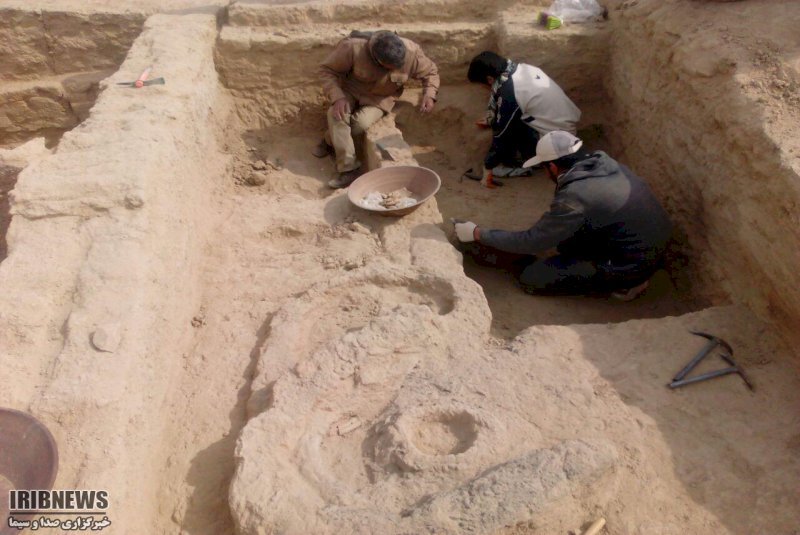Archaeologists resume work in Burnt City

TEHRAN – Archaeologists and cultural heritage experts have commenced work in Burnt City, a magnificent UNESCO-registered site in southeast Iran.
“A new archaeological examination has begun in Shahr-e Sukhteh aimed to shed new light on previously discovered architectural structures and potteries in workshops number 20 and 35,” the director of the World Heritage site said on Saturday.
The resumption of research activities in these two workshops is aimed at completing previous studies on the one hand, and cast light on cultural developments in human settlements in various periods, Zohreh Shirazi said.
Results of the current study are expected to be published in terms of chronology, architectural structures, and their functions, she explained.
Last year, teams of Iranian, Italian, and Serbian archaeologists discovered ruined settlements and fresh clues about life in Burnt City. In December 2022, archaeologists in Burnt City found a fingerprint left on a clay vessel made by a potter some 5,000 years ago.
Also known as Shahr-e Sukhteh or Shahr-i Sokhta, Burnt City is associated with four rounds of civilization, all burnt down by catastrophic sets of fire. The site is situated in the Sistan-Baluchestan province, which was once a junction of Bronze-Age trade routes crossing the Iranian plateau.
According to UNESCO, changes in water sources and climate change led to the eventual abandonment of the city in the early second millennium. The structures, burial grounds, and numerous significant artifacts unearthed there and their well-preserved state due to the dry desert climate make this site a rich source of information regarding the emergence of complex societies and contacts between them in the third millennium BC.
“In general, the surrounding desert landscape and extraordinary scatter of archaeological material present on the surface of the low hill of Shahr-i Sokhta give a strong sense of authenticity, as does the sight of the complex architecture of the various parts so far excavated. The labyrinthine succession of rooms, corridors, and courtyards gives a genuine impression of these ancient buildings.”
Burnt City was inhabited from its founding around 3200 BC through four major eras until 1800 BC. Previous excavations revealed that the area's inhabitants were masters of weaving and the creation of fine arts, including stone carving, pottery painting, and decorative objects.
AFM
